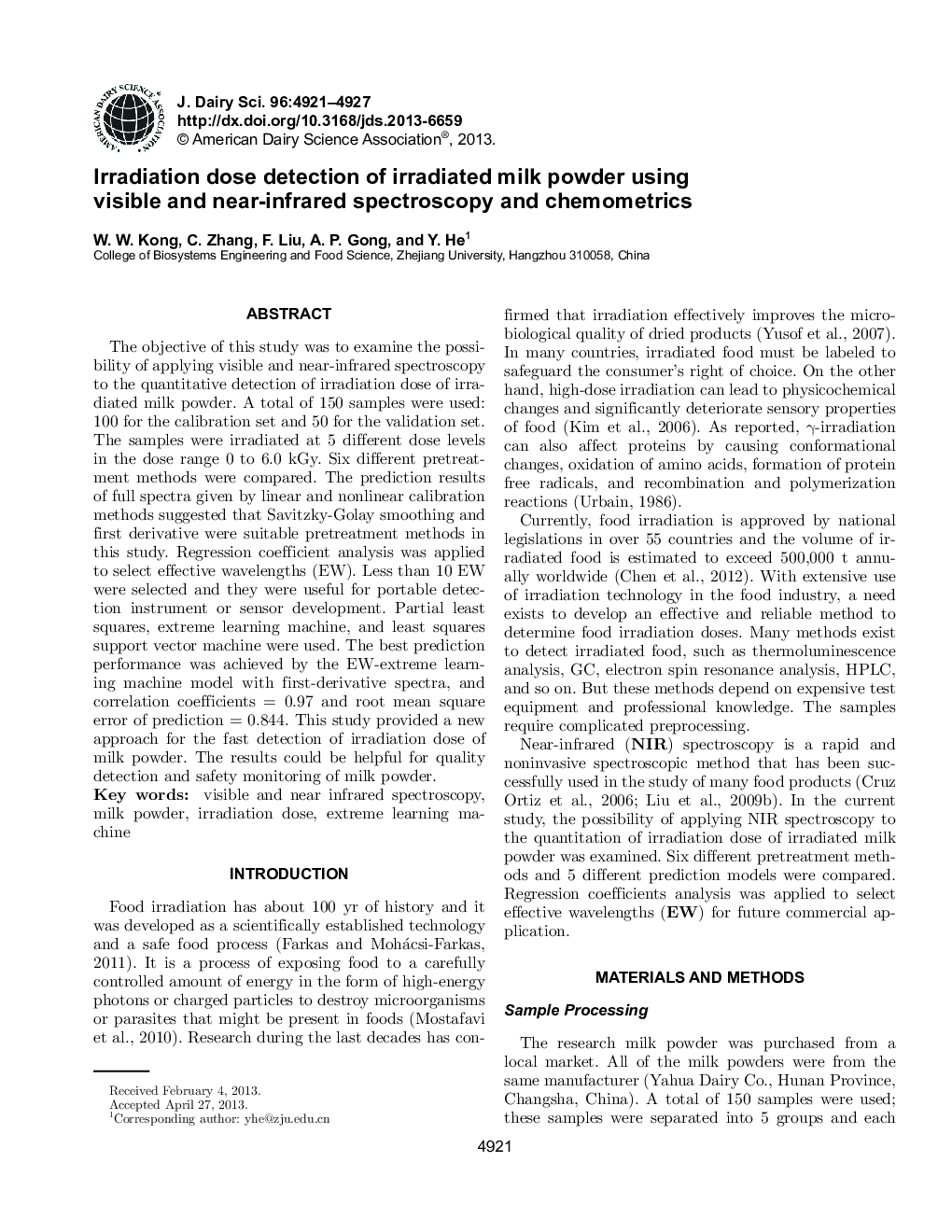| Article ID | Journal | Published Year | Pages | File Type |
|---|---|---|---|---|
| 2438872 | Journal of Dairy Science | 2013 | 7 Pages |
Abstract
The objective of this study was to examine the possibility of applying visible and near-infrared spectroscopy to the quantitative detection of irradiation dose of irradiated milk powder. A total of 150 samples were used: 100 for the calibration set and 50 for the validation set. The samples were irradiated at 5 different dose levels in the dose range 0 to 6.0 kGy. Six different pretreatment methods were compared. The prediction results of full spectra given by linear and nonlinear calibration methods suggested that Savitzky-Golay smoothing and first derivative were suitable pretreatment methods in this study. Regression coefficient analysis was applied to select effective wavelengths (EW). Less than 10 EW were selected and they were useful for portable detection instrument or sensor development. Partial least squares, extreme learning machine, and least squares support vector machine were used. The best prediction performance was achieved by the EW-extreme learning machine model with first-derivative spectra, and correlation coefficients = 0.97 and root mean square error of prediction = 0.844. This study provided a new approach for the fast detection of irradiation dose of milk powder. The results could be helpful for quality detection and safety monitoring of milk powder.
Related Topics
Life Sciences
Agricultural and Biological Sciences
Animal Science and Zoology
Authors
W.W. Kong, C. Zhang, F. Liu, A.P. Gong, Y. He,
